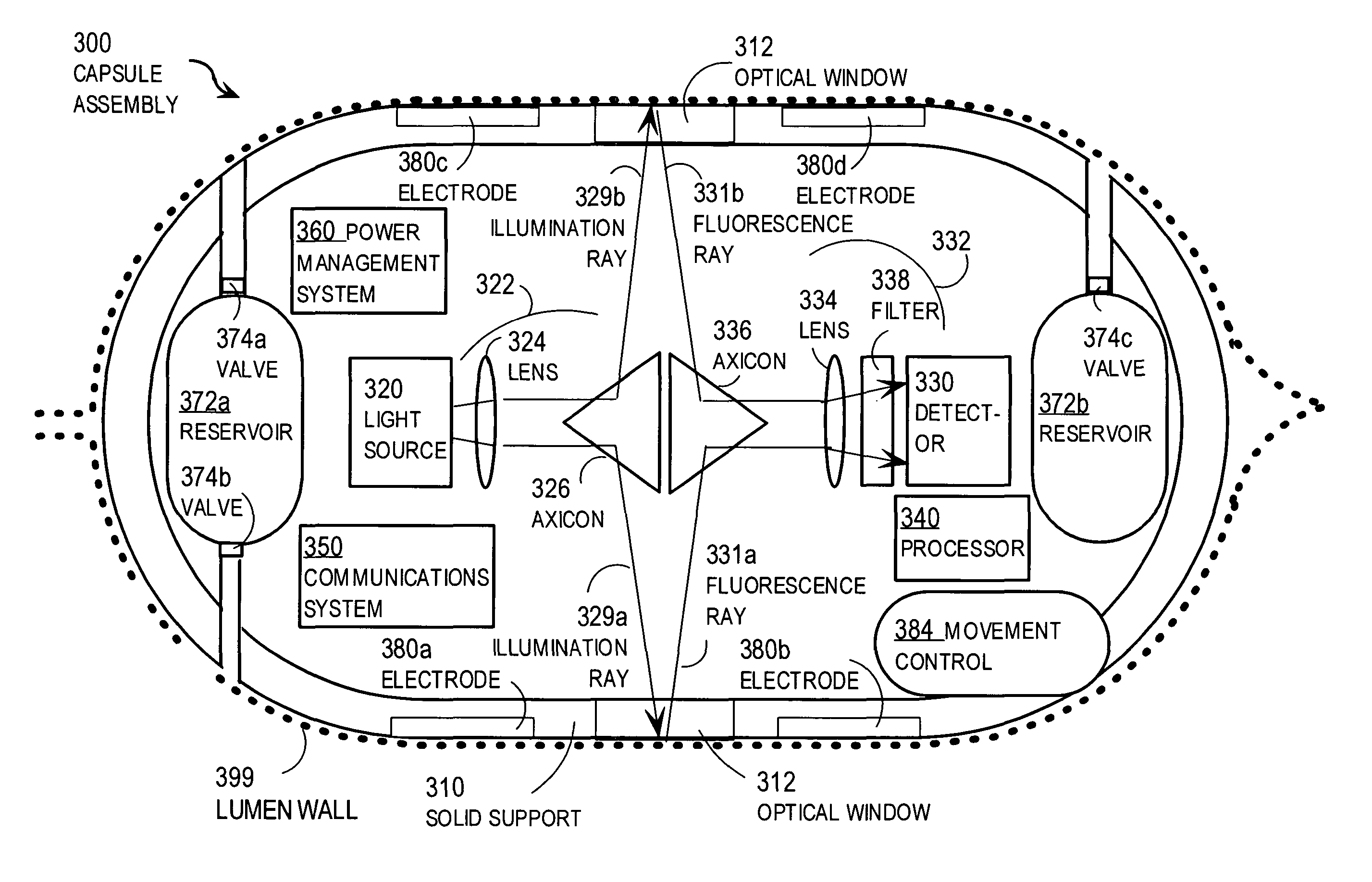Techniques for identifying molecular structures and treating cell types lining a body lumen using fluorescence
a technology of molecular structure and cell type, applied in the field of fluorescence imaging of cell type in the walls of the body lumen, can solve the problems of inability to distinguish capsule systems, inability to inspect most of the small intestine, and inability to inspect some portions of the large intestine (colon), so as to enhance the local enhance the uptake of exogenous probes
- Summary
- Abstract
- Description
- Claims
- Application Information
AI Technical Summary
Benefits of technology
Problems solved by technology
Method used
Image
Examples
Embodiment Construction
[0035]A method and apparatus are described for quantitative identification of specific molecular structures and tissue constituents as well as cell type and functions in the walls of a body lumen. In the following description, for the purposes of explanation, numerous specific details are set forth in order to provide a thorough understanding of the present invention. It will be apparent, however, to one skilled in the art that the present invention may be practiced without these specific details. In other instances, well-known structures and devices are shown in block diagram form in order to avoid unnecessarily obscuring the present invention.
[0036]Embodiments of the invention are described primarily in the context of diagnosis and therapy for dysfunction of the human intestinal tract, but the invention is not limited to this context. For example, in other embodiments the techniques may be applied to non-human animals. Furthermore, in other embodiments, the techniques may be appli...
PUM
 Login to View More
Login to View More Abstract
Description
Claims
Application Information
 Login to View More
Login to View More - R&D
- Intellectual Property
- Life Sciences
- Materials
- Tech Scout
- Unparalleled Data Quality
- Higher Quality Content
- 60% Fewer Hallucinations
Browse by: Latest US Patents, China's latest patents, Technical Efficacy Thesaurus, Application Domain, Technology Topic, Popular Technical Reports.
© 2025 PatSnap. All rights reserved.Legal|Privacy policy|Modern Slavery Act Transparency Statement|Sitemap|About US| Contact US: help@patsnap.com



